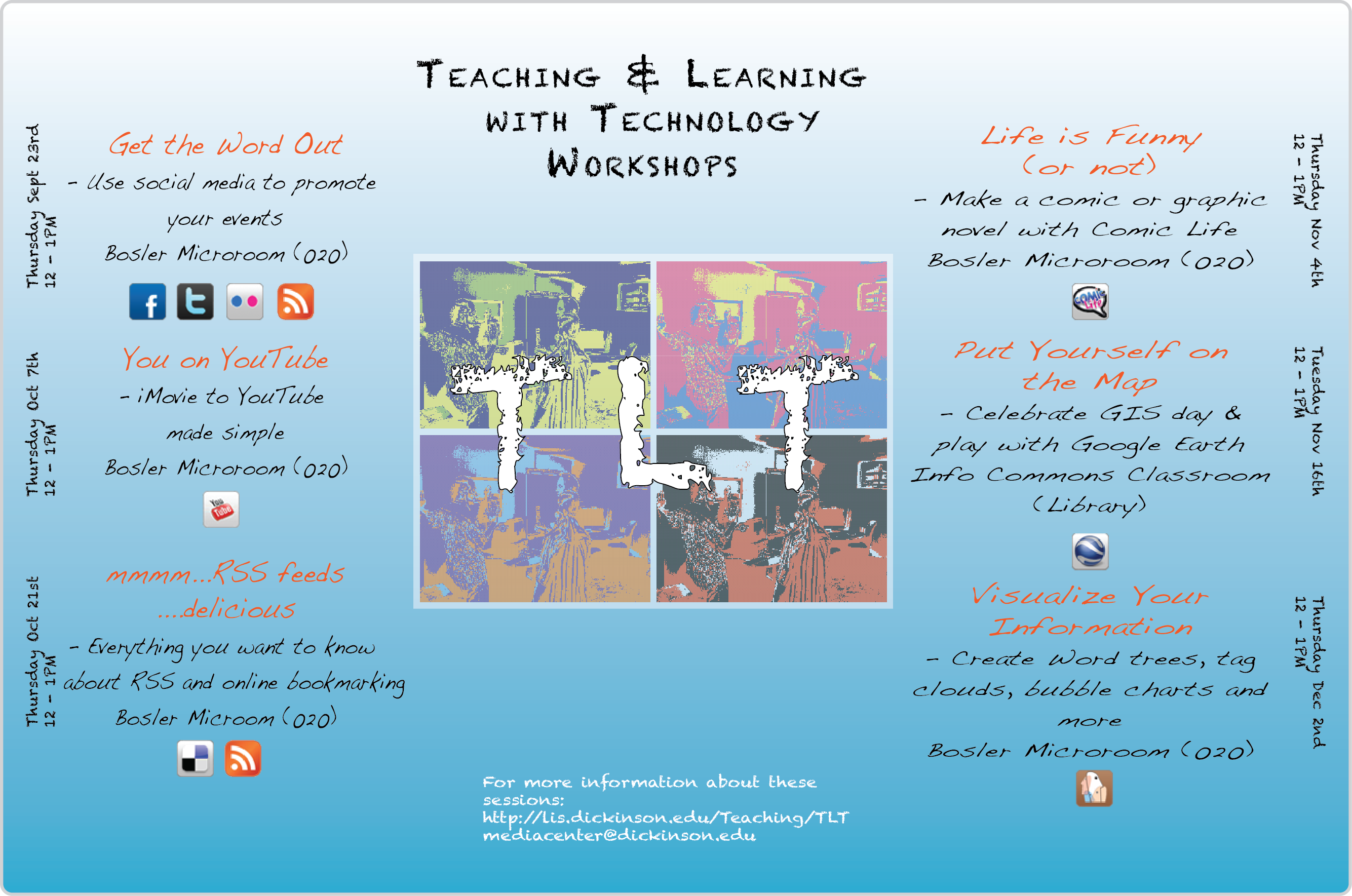Outline
- Types of Social Media
- Youtube
- Flickr
- Blogs
- Best Practices
- Connecting to people
- Know your audience. Deliver information they are interested in in a way they can connect to it.
- Be positive
- Spread good news about the organization, people currently or formerly in the organization
- Be fun
- Don’t be a narcissist
- Be genuine-people connect to that
- Thank people who comment/fan
- People like to feel special too
- Updating Efficiently
- Streamlining & managing messages/media so sites cross fill each other
- If you don’t want to maintain all of the elements, start with only a few you can manage.
- Choose a point person to post
- Social Media Hour (daily/weekly)
- Images/Video are great but you have to first have someone shoot it so you can post it.
- Distribute to student workers/others in organization so it’s not on the party planners shoulders.
- Promotion
- Cross Promote with like minded groups. The more eyes viewing your site the better.
- Connecting with interested parties first.
- Technologies
- Selective Twitter
- Twitter Feed
- RSS Graffiti
- Involver suite
- Hoot Suite
- Tweetdeck
Links
Gracefully promote yourself online
Mashable
ReadWriteWeb
Social Media Examiner
In Social Media, Failing to Plan is Planning to Fail
Inside the lives of social networking site users
http://www.bitrebels.com/social/the-best-time-of-day-to-tweet-to-get-the-most-rts/
also see: http://www.thebrandmechanic.com/best-time-of-day-week-social-media-marketing/
http://www.comscoredatamine.com/2011/07/google-plus-reaches-20-million-visitors-in-21-days/
Resources






